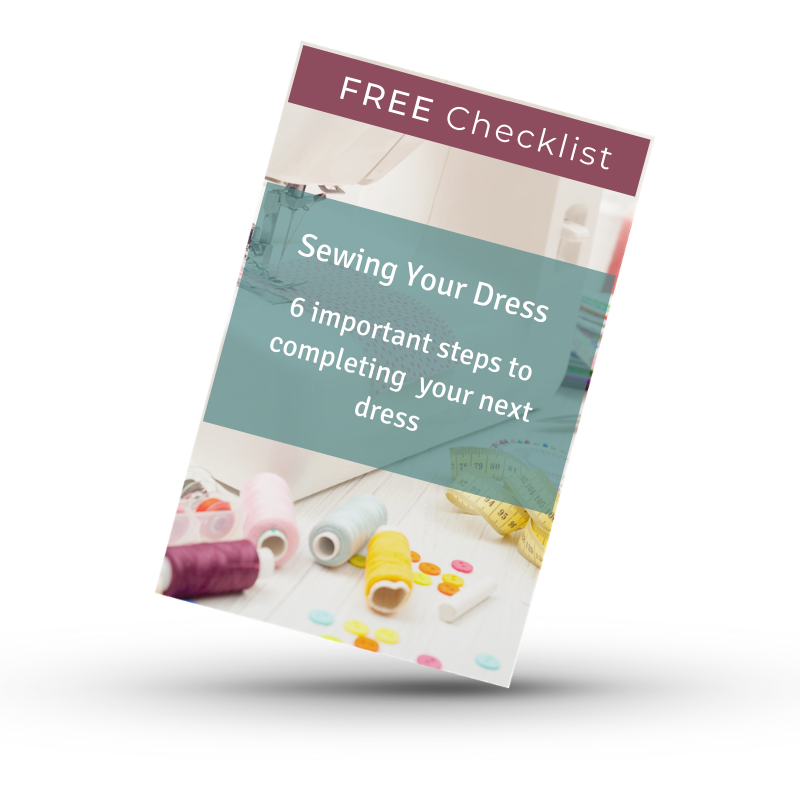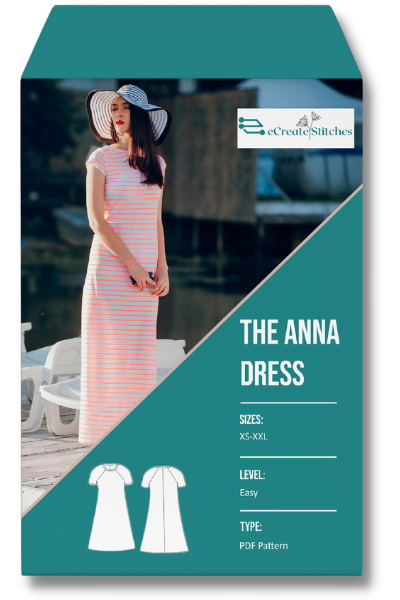Sewing with knit fabrics can be easy and frustrating at the same time. There are so many different types of knit fabrics, each with their particular percent of stretch. And purchasing fabric is harder because of all the options.
Knit fabric is more forgiving when it comes to fit and comfort because it stretches. Unlike woven fabric, knit fabric doesn’t require as much ease for the dress to feel comfortable. Because of this knit fabric is easier to sew with.
One of the biggest challenges with sewing with knit fabrics, is that the same pattern doesn’t work the same for each type of knit fabric.
If you are new to sewing or if you are struggling with sewing knit fabrics, I want to help you so that you can enjoy sewing each dress you want to make.
Here are a few tips that I want to share with you.
sewing with knits : matching pattern and fabric
If you want the best outcome in the fit and feel of your dress it is so important to use the type of fabric that the pattern requires.

And you know what? Many times I have used the wrong pattern with the fabric I wanted to sew and had very undesirable outcomes. 😩
So be intentional when choosing either the pattern or the fabric. Ask yourself if you are going to enjoy sewing the type of fabric that just caught your eye. Or is it going to be difficult?
Or when choosing a pattern, check what type of fabric it requires and see if that is the type of fabric that you like sewing or that will be easy to work with.
Liverpool fabric or Ponte de Roma fabric are both very stable knits and easy to work with. If you are unable to find these types of fabrics in stores near you, there a lots of online stores that sell them.
Another thing, some woven fabrics have spandex in them, making them a bit stretchy. This is not a good alternative for knit fabrics. If a pattern calls for knit fabric, use knit fabric for best results.
Tip for cutting out slinky knits: Using spray starch helps to stabilize the fabric for cutting and sewing.
Some patterns, eCreate Stitches patterns for example, list a certain stretch percent in the fabric requirements. So if you plan to use a pattern like this check the stretch percent when choosing the fabric for that pattern. HERE is an easy stretch percent guide you can download and print and to check your fabric.
Also, if you are trying a new pattern, you will want to test it to make sure you have chosen the right size and that it will fit. So pick up some extra fabric or fabric from the bargain section.
Just make sure the fabrics you buy are the same type or have the same stretch percent.
Cutting and sewing knit fabrics
Pattern pieces need to be cut straight on grain or straight along the ribs of the fabric. Make sure the fabric is folded so that the ribs are straight along the fold.
Use pins or weights such as table knives or pattern weights to hold the pattern pieces in place while you cut.
A tip for slinky knits like DTY: spray starch helps to stabilize the fabric while cutting and sewing.
Since the fabric stretches, your seams will need to stretch too. A slight zigzag is an easy stitch that any basic sewing machine has.
Another option is to do a stretch stitch, which takes more time but works even better than the zigzag stitch.
A couple other options for stable seams is to sew and serge each seam or do a double seam by sewing it twice.
Here are a few pictures of the different stitches.

Slight zigzag stitch

This stitch is called a double overlock stitch. It is also an alternative to serging so no need to serge if you use this stitch. 😊

This is called a Vari-overlock stitch to be used primarily for fine jerseys and stretch seams and hems.
Needles and pins
Using a stretch needle to sew with knit fabric works the best. Universal needles work too, but you will have the best outcome with a stretch needle.
A twin needle works really well too for sewing hems.
Use pins generously when sewing. Pins help to keep the fabric stable as you sew. Knit fabric just moves around more than woven and needs that extra bit of stability to make a nice straight seam.
Save yourself frustration by choosing patterns and fabric that are meant for each other. And by using a stretch needle along with a stretch stitch or something similar will keep the dress together for a long time.
Wishing you much happiness as you sew your next knit dress! 😍
I would love to hear from you! What is your biggest challenge when it comes to sewing with knits?









